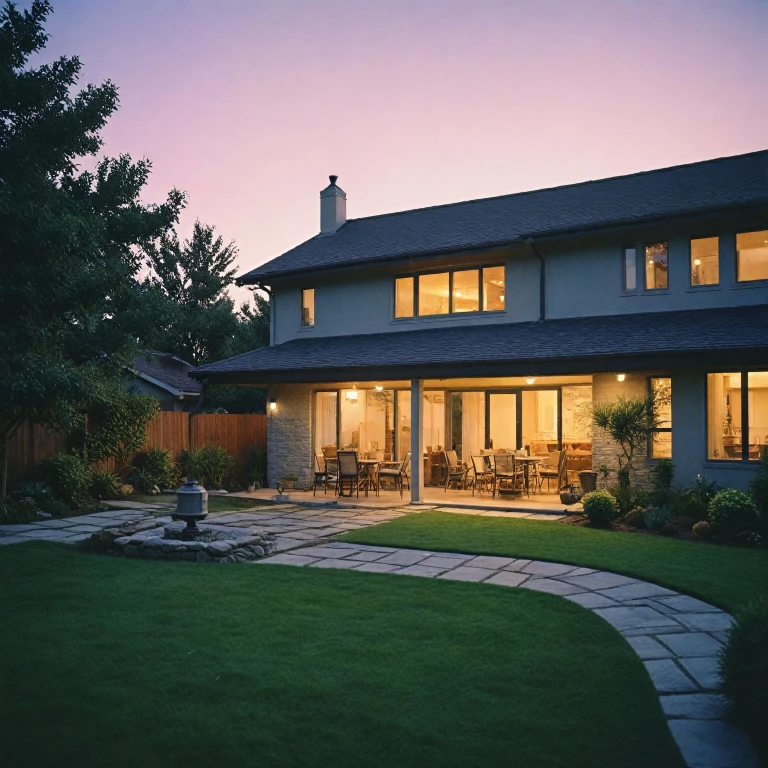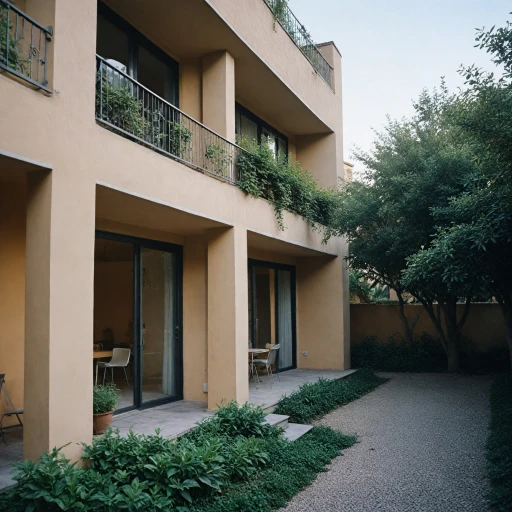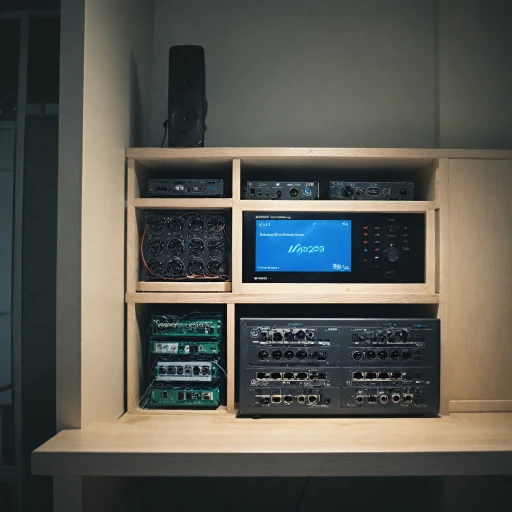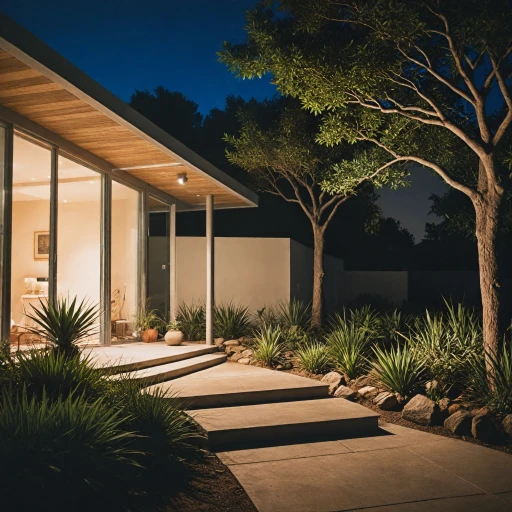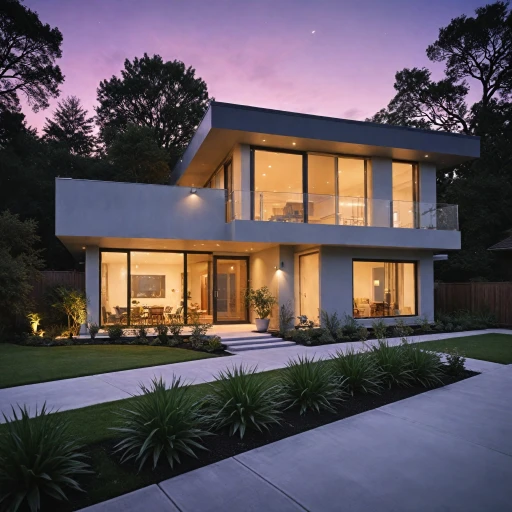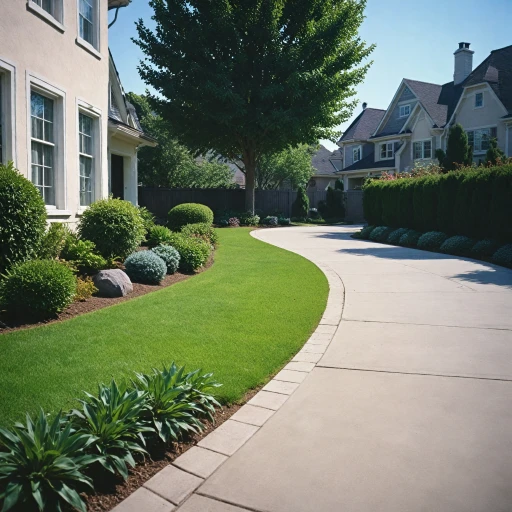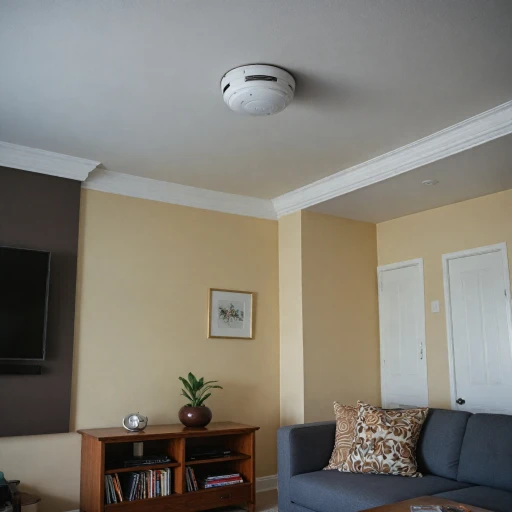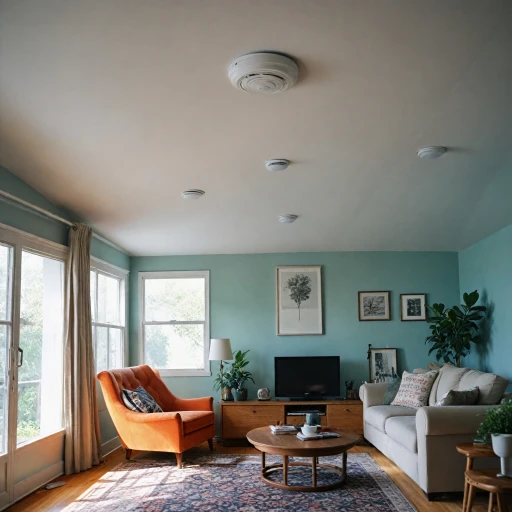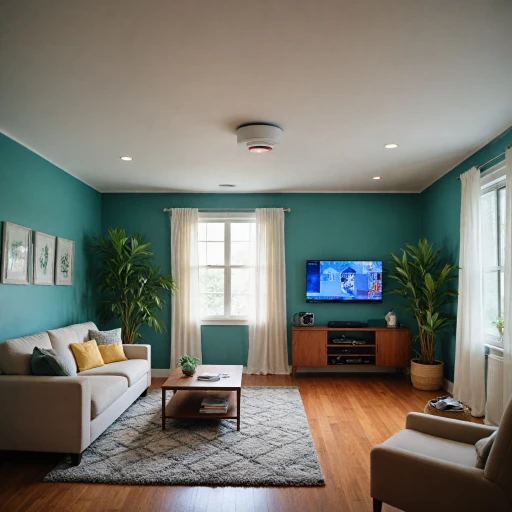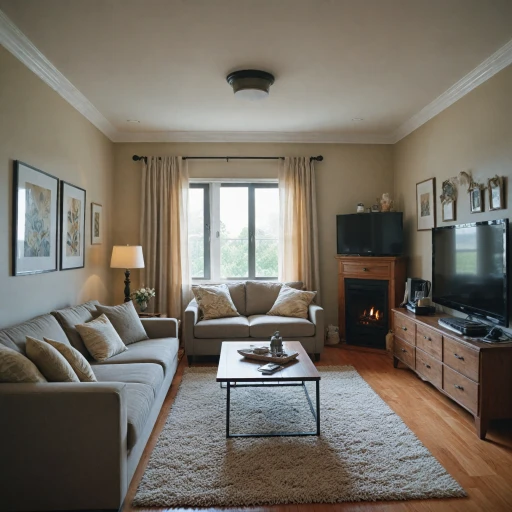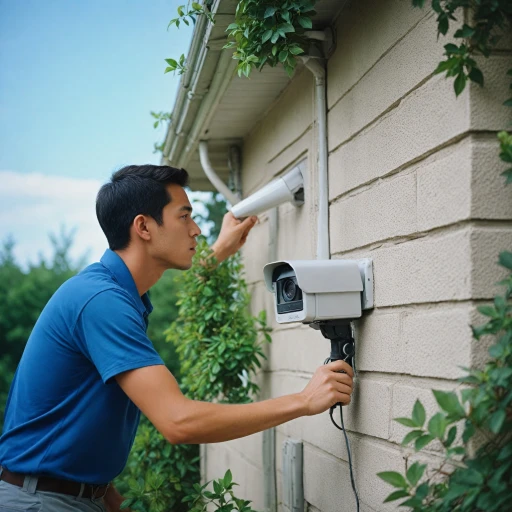
Understanding Outdoor PTZ Cameras
Introduction to Outdoor PTZ Cameras
When considering the enhancement of your home's security, an outdoor PTZ camera stands out as a versatile and robust option. Known for their ability to pan, tilt, and zoom, these cameras offer comprehensive coverage of outdoor areas, making them a smart investment for any residential security system.Understanding the Technology
The PTZ in PTZ Camera stands for pan, tilt, and zoom, which are critical functions that allow for wider coverage and detailed surveillance. These cameras can rotate (pan) to cover a wider area, move up or down (tilt) to adjust the field of view, and zoom in for closer inspections, whether it involves monitoring a large garden or zooming into a specific point of interest.Optical Zoom and Image Quality
Outdoor PTZ cameras commonly feature optical zoom capabilities, enabling you to focus on distant objects without sacrificing image quality. This optical zoom functionality is crucial for identifying potential security threats from afar, providing a higher degree of detail compared to digital zoom options offered by other security cameras.Network and Connectivity Advantages
The majority of PTZ cameras operate within a network setup, allowing for integration with other smart systems like indoor security units or wide-angle 180-degree cameras to enhance coverage. Such a network camera configuration supports remote access through mobile devices or computers, making it convenient to monitor your property, whether you're indoors or away. Read more about how the wide-angle 180-degree camera complements PTZ systems by covering more ground effortlessly. Outdoor PTZ cameras provide a flexible yet comprehensive solution for video surveillance, offering the ability to adapt to changing security requirements over time. In future sections, we will explore critical features to consider when selecting a PTZ model, as well as how they stack up against alternative security options.Key Features to Look for in an Outdoor PTZ Camera
Understanding the Vital Features of Outdoor PTZ Cameras
Outdoor PTZ cameras are known for their ability to provide comprehensive surveillance coverage in a flexible manner. These types of security cameras come equipped with a variety of features that make them well-suited for monitoring the outdoors. Here are some key aspects that one must consider when choosing an outdoor PTZ camera:- Optical Zoom Capability: Optical zoom is a critical feature of PTZ cameras, enabling them to zoom in and out without losing image quality. This is advantageous when you need to focus on specific objects in an outdoor setting. Consider a camera with a significant optical zoom capacity to cover large areas effectively.
- Resolution and Image Quality: The resolution, typically measured in megapixels, determines the clarity of the video footage. A high-resolution network camera ensures that every detail is captured accurately, enhancing overall security.
- Pan, Tilt, and Zoom (PTZ) Functions: The ability to pan and tilt allows the camera to cover a wide area, while the zoom function can bring distant objects into focus. These functions combined make PTZ cameras efficient in tracking movements and monitoring large outdoor spaces.
- Night Vision Capabilities: For 24-hour security surveillance, a camera equipped with night vision or infrared capabilities is essential. These features enable the camera to perform well in low-light conditions, maintaining security at all hours.
- Smart Features and Integration: Modern PTZ network cameras often come with smart technology integration, allowing for automated alerts, remote access, and seamless integration with existing security systems. Make sure the camera supports connectivity with your existing network setups.
- Durability and Weather Resistance: Since these cameras are meant for outdoor use, they must be robust and weather-resistant, supporting operations in various environmental conditions.
Installation Tips for Outdoor PTZ Cameras
Effective Setup Strategies for Your Outdoor PTZ Camera
When it comes to securing your outdoor spaces, carefully installing a PTZ camera is crucial to optimize its capabilities, including pan, tilt, and zoom features. Firstly, assess the most vulnerable areas of your property that the camera needs to cover. For maximum coverage, position the camera at a strategic vantage point that allows sweeping views using the pan and tilt functionalities. Before installation, ensure you have a stable network connection accessible in the outdoor areas. Most modern PTZ cameras, including those from brands like Amcrest, are designed to connect seamlessly to existing security systems. If necessary, consider professional network setup to maintain remote access and control the camera through various devices. Regarding power supply, outdoor PTZ cameras might require specific installations to protect their power connections against weather-related damages. Some setups also support alternative power options, such as solar.Optimal Settings and Adjustments
Once the camera is in place, adjust the zoom capabilities to tailor the resolution and focal lengths to your security needs. A PTZ network camera with optical zoom offers significant advantages over digital zoom, maintaining image quality even from a distance. Additionally, consider enabling advanced features like night vision for round-the-clock monitoring. Properly calibrate the camera's stroke width and fill stroke settings to ensure clarity in low-light conditions, which is particularly important for megapixel lenses. Finally, integrate your PTZ camera into a broader security system. Compare its feed with your indoor PTZ units to ensure seamless indoor and outdoor video monitoring. For further protection measures, check this guide on enhancing your home security with a reliable driveway alarm and waterproof outdoor motion sensor. This can provide an additional layer against intruders, ensuring the PTZ camera's efficiency and reliability in tough situations. Following these installation tips can aid in securing your home effectively, maximizing the functionality and longevity of your security camera network.Comparing Outdoor PTZ Cameras with Other Security Options
Evaluating Your Options: A Comprehensive Overview
When it comes to enhancing your home security with outdoor PTZ cameras, it's essential to understand how they compare to other security solutions. Let’s dive into the unique advantages these cameras offer in contrast to alternative systems.
1. Versatility and Coverage
Outdoor PTZ cameras provide a broad range of motion, offering pan, tilt, and zoom capabilities that ensure maximum coverage of your property. Unlike fixed-position cameras, PTZ cameras can monitor larger areas, making them ideal for expansive outdoor spaces. Their ability to rotate and zoom optically allows for real-time tracking, setting them apart from traditional fixed cameras.
2. Superior Image Quality
Equipped with advanced megapixel resolutions and optical zoom features, PTZ cameras deliver clear video even at great distances. These capabilities often exceed the performance of regular security cameras, allowing for detailed monitoring and recognition.
3. Night Vision Capabilities
Security systems increasingly rely on night vision to provide constant surveillance, and PTZ cameras are no exception. With enhanced night-time imaging technologies, they ensure your home remains under watchful eyes even in low-light conditions, unlike some lesser-equipped camera systems.
4. Integration with Smart Systems
Modern PTZ cameras often work seamlessly with smart home systems. This integration allows homeowners to control and monitor their cameras remotely, enhancing overall security and convenience. The networked nature of PTZ security cameras means they can be part of a cohesive security strategy.
5. Price and Investment Considerations
While the initial price of PTZ cameras may be higher than other security solutions, their advanced features, such as pan tilt zoom and improved image resolution, might provide a better return on investment for properties demanding comprehensive surveillance.
Interestingly, if you’re considering this technology for indoor use as well, note that indoor PTZ options can be limited compared to outdoor solutions, emphasizing weather-resistant capability as a key feature.
Common Challenges and Solutions for Outdoor PTZ Cameras
Troubleshooting and Solutions for Your Outdoor PTZ Camera
Outdoor PTZ cameras can greatly enhance your home security by providing a wide range of features like pan, tilt, and zoom capabilities, which ensure comprehensive surveillance. However, users may occasionally encounter challenges in maximizing the potential of their outdoor PTZ network camera systems. Here's a rundown of some common issues and their solutions, helping you make the most of your security investment.- Connectivity Issues
- Ensure your network strength is sufficient. Consider upgrading your router or using a Wi-Fi extender for better range.
- Opt for a wired network camera setup for stable performance if wireless inconsistencies persist.
- Blurred or Poor Image Quality
- Regularly clean the camera lens to prevent dirt and debris buildup.
- Adjust the camera's optical zoom if the image appears distorted due to excessive zooming.
- Check night vision capabilities and ensure your camera's IR lights are working properly for nighttime surveillance.
- Limited Coverage and Blind Spots
- Reassess the camera placement, ensuring it’s mounted at an optimal height and angle.
- Fine-tune pan tilt zoom functions to better cover the desired areas.
- Power Supply Issues
- Check the power connections regularly, ensuring they are secure and waterproof.
- Consider an uninterrupted power supply (UPS) to mitigate outages.
Choosing the Right Outdoor PTZ Camera for Your Home
Considerations When Selecting Your PTZ Camera
Choosing the right outdoor PTZ camera for your home involves understanding your specific security needs and evaluating the available options. As you've likely noted from exploring the features section, a few elements stand out when assessing PTZ cameras.
Firstly, assess the optical zoom capabilities. The ability to zoom in without losing image quality is crucial for identifying distant subjects clearly. Look for cameras with higher optical zoom levels to ensure sharp, detailed visuals.
Consider resolution as well. Higher megapixels mean clearer and more detailed images, which is beneficial for accurately capturing incidents. Aim for at least 1080p, but if budget allows, opt for even higher resolution options.
The pan and tilt functions are equally important. Evaluate how well the camera can cover multiple angles without blind spots. A vast range of motion is key to comprehensive surveillance.
When it comes to networking options, PTZ network cameras provide enhanced connectivity and remote access. A robust network ensures reliability in video transmission and access to live feeds from anywhere.
Smart features, such as motion detection and night vision, add layers of security. These features enable the camera to adapt to varied lighting conditions and notify you of any unusual activity.
Don't overlook price considerations. While more advanced systems might come at a higher cost, investing in a high-quality camera like those from brands such as Amcrest can offer superior performance and peace of mind.
Lastly, re-evaluate other security systems to decide if an indoor PTZ camera should complement your security setup, ensuring protection both indoors and outdoors. Balancing your system's components can remarkably enhance your home’s safety.
In summary, focus on the camera's technological features and compatibility with existing systems to make a choice that aligns with your security goals.

